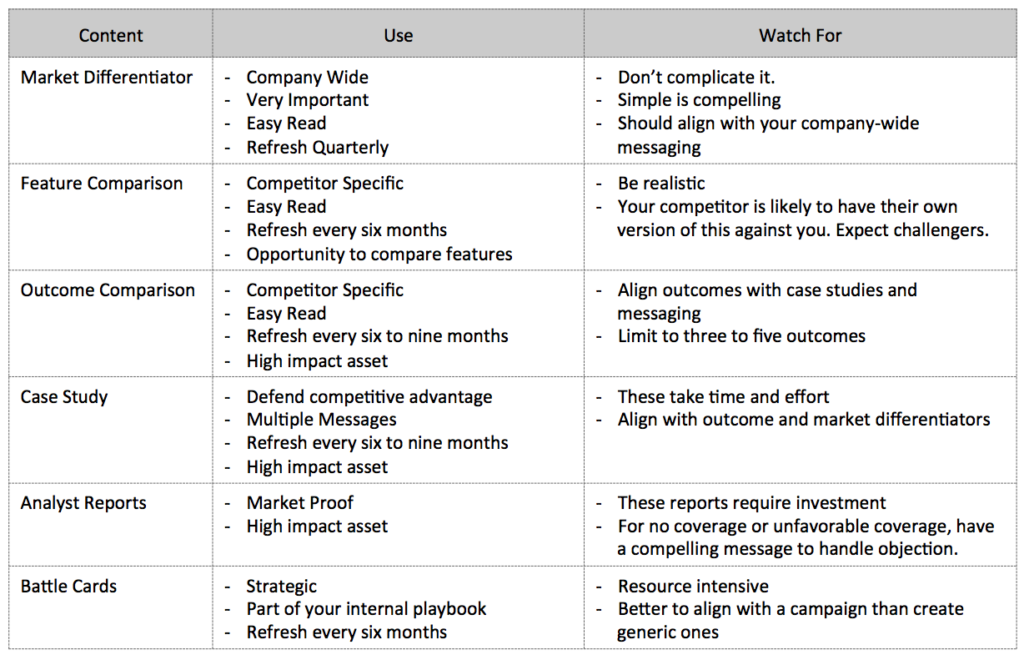Table of Contents
Competitive Analysis
Competition is healthy. Having competitors is a strong validation of your target market. It is an important dimension of your go to market strategy.
However, competition also makes you work that much harder. Your competitors, like you, are trying hard to get their message across to their target market.
They are spending dollars to get in front of the same prospects that your organization is chasing. Depending on the maturity of the market, your prospect may already be using your competitor’s products but exploring your company’s offering as an alternative.
When your company operates in a competitive market, competition warrants attention from sales and marketing. Companies have been known to spend a lot of sales and marketing resources to get ahead of the competition.
But at a minimum, you need to arm your revenue teams with actionable and useful information that will help your prospect make an informed decision.
However, several organizations don’t invest in building actionable competitive information because they assume it to be expensive and time-consuming. But it need not be.
Start from the basics
In our experience, here are two commonly asked competitor-related questions in a sales cycle.
- Who do you consider your competitors (for this offering)?
- How is your offering different from Competitor A and/or B?
These are valid questions; not having a useful response to these questions can really hurt your prospects of winning.
However, companies often complicate the process of enabling their revenue teams with competitive information. Here are some simple tips to enable revenue team with competitive data.
Track Competitors
Are you tracking your competitors? Do you have a list of your primary competitors that you bump into all the time? If not, then putting this list down is an excellent place to get started. Do not assume that your sales teams know all the competitors.
Segment Competitors
Do you have multiple offerings in the market?
Do you do business in different geographies?
Do you cater to different market tiers?
If the answer is yes to any of these questions, it is quite likely that you face different competitors in different segments of your market. Map your competitors to your segments.
Differentiate your offering
You should have an answer to the broader question – What is your differentiation in the marketplace? This question should be answered irrespective of a specific competitor and can be part of your overall corporate positioning.
Spelling this out will really help detailed level competitive discussions. When you start comparing your offerings with individual competitors, those talking points should map back to your company’s overall differentiator.
Start with simple collateral
There is no limit to the degree of competitive analysis an organization can conduct. However, when your revenue teams are fielding queries about your competitors and the differentiation of your offering, we have seen that simple is better. Why is that?
- It is easier to digest for your revenue team members and your prospects.
- A simple piece of collateral is easier to refresh and maintain. Your competitive collateral should be refreshed regularly as your offerings, and your competitor’s offerings evolve.
- It is easier to templatize a simple format.
Competitive Content Types
We have here a list of popular content types for competitive analysis.

Key Takeaway
Building content takes resources. And it is quite likely that some of the information needed to create these assets is already available in your organization.
You just need to put it in the right structure to scale that information. Moreover, you can start small. You can focus on the Feature Comparisons and Outcome Comparisons and slowly build into a richer library of assets to help your revenue teams compete.





